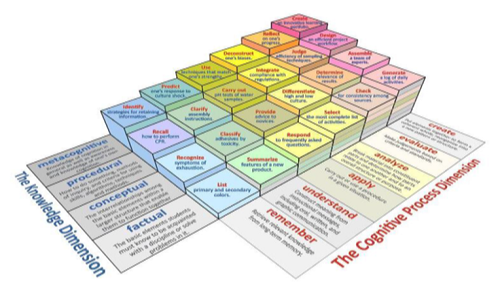
Student Concept Mastery on Coloid Material Through Radec Learning
Abstract
Mastery of concepts is still the main standard of learning success in Indonesia. This study aims to analyze students' conceptual mastery of colloidal material through the RADEC (Read, Answer, Discuss, Explain, and Create) learning model. The research method used is the Pre-Experiment method with the research design of One Group Pretest-Posttest Design. The number of subjects in this study were 18 students. Data were collected using 25 multiple choice items used for pretest and posttest. Data were analyzed through normality test, t test and N-gain using SPSS version 21 for windows. The results of the Paired Sample T-Test showed that there was a significant difference between the pretest score (39.7) and posttest score (74.4) (p<0.05) with the N-gain value obtained was 0.56. This means that there is an increase in the medium category in students' concept mastery through RADEC learning.
Keywords
Full Text:
PDFReferences
Anderson, L.W., & Krathwohl, D.R. (2001). A Taxonomy for Learning, Teaching and Assesing: A Revision of Bloom’s Taxonomy of Educatioanl Objectives. New York: Addison Wesley Longman, Inc.
Bloom, S. E. (1974). Current knowledge about the avian W chromosome. BioScience, 24(6), 340-344. https://doi.org/10.2307/1296739.
Carroll, J. B. (1963). A model of school learning. Teachers college record. Retrieved from http://garfield.library.upenn.edu/classics1982/A1982NF37300001.pdf
Hake, R.R. (1998). Analyzing Change/Gain Scores. USA: Indiana University.
Handayani, H., Sopandi, W., Syaodih, E., Setiawan, D., & Suhendra, I. (2019). Dampak perlakuan model pembelajaran RADEC bagi calon guru terhadap kemampuan merencanakan pembelajaran di sekolah dasar. Pendas: Jurnal Ilmiah Pendidikan Dasar, 4(1), 79-93.
Heer, R. (2012). A Model of Learning Objectives based on A Taxonomy for Learning, Teaching, and Assessing: A Revision of Bloom's Taxonomy of Educational Objectives. Center for Excellence in Learning and Teaching, Iowa State University.
Krathwohl, D. R. (2002). A revision of Bloom's taxonomy: An overview. Theory into practice, 41(4), 212-218.
Latisma, dkk. (2015). Analisis Kecenderungan Pemahaman Konsep Siswa Ditinjau Dari Gaya Belajar Pada Materi Sistem Koloid Di SMA Kerinci. Prosiding Semirata MIPA Universitas Tanjungpura, Pontianak 523 – 532.
Nisrina, N., Gunawan, G., & Harjono, A. (2016). Pembelajaran Kooperatif dengan Media Virtual untuk Peningkatan Penguasaan Konsep Fluida Statis Siswa. Jurnal Pendidikan Fisika dan Teknologi, 2(2), 66-72.
Ritonga, I. (2019). Skripsi: Pengaruh Gender Terhadap Peningkatan Kemampuan Aktual Siswa Pada Materi Koloid. Bandung: Universitas Pendidikan Indonesia.
Setiawan, D., Sopandi, W., & Hartati, T. (2019). Kemampuan menulis teks eksplanasi dan penguasaan konsep siswa sekolah dasar melalui implementasi model pembelajaran RADEC. Premiere Educandum Jurnal Pendidikan Dasar dan Pembelajaran, 9(2), 130-140.
Setiawan, D., Hartati, T., & Sopandi, W. (2020). Effectiveness Of Critical Multiliteration Model With Radec Model On The Ability Of Writing Explanatory Text. Edu Humaniora Jurnal Pendidikan Dasar Kampus Cibiru, 12(1), 1-14.
Silaban, B. 2014. Hubungan Amtara Penguasaan Konsep Fisika dan Kreativitas dengan Kemampuan Memecahkan Masalah pada Materi Pokok Listrik Statistik. Jurnal Penelitian Bidang Pendidikan. Vol 20 (1).65-75.
Siregar, L. S. (2019). Tesis: Desain Pembelajaran Polimer Menggunakan Model Read-Answer-Discuss-Explain-Create (RADEC) Berbasis Google Classroom untuk Mengembangkan Penguasaan Konsep dan Kreativitas Siswa SMK pada Pembuatan Bioplastik. Bandung: Universitas Pendidikan Indonesia.
Sopandi, W. (2017). The quality improvement of learning processes and achievements through the read-answer-discuss-explain-and create learning model implementation. Proceeding 8th Pedagogy International Seminar 2017: Enhancement of Pedagogy in Cultural Diversity Toward Excellence in Education, 8(229), 132–139.
Sopandi, W. (2019). Sosialisasi dan Workshop Implementasi Model Pembelajaran RADEC Bagi Guru-Guru Pendidikan Dasar dan Menengah [Dissemination and Implementation Workshop of RADEC Learning Models for Primary and Secondary Education Teachers]. Pedagogia: Jurnal Pendidikan, 8(1), 19-34.
Suranti, N. M. Y., Gunawan, G., & Sahidu, H. (2016). Pengaruh Model Project Based Learning Berbantuan Media Virtual Terhadap Penguasaan Konsep Peserta didik pada Materi Alat-alat Optik. Jurnal Pendidikan Fisika dan Teknologi, 2(2), 73-79.
Susetyo, B. (2010). Statistika Analisis Data Penelitian. Bandung: refika Aditama.
Suwarto. (2010). Dimensi Pengetahuan dan Dimensi Proses Kognitif dalam Pendidikan. Journal Widyatama. 19 (1): 76 – 91.
Thorndike, R. L. (1976). Reading comprehension education in fifteen countries: International Studies in Evaluation. New York: Wiley. https://doi.org/10.1086/445874.
Vellanda, S. (2019). Skripsi: Penguasaan Materi Kesetimbangan Kimia Melalui Implementasi Model Pembelajaran Read-Answer-Discuss-Explain And Create (RADEC). Bandung: Universitas Pendidikan Indonesia.
Vygotsky, L. S. (1978). Mind in society: The Development of Higher Psy-chological Processes (M. Cole, V John-Steiner, S. Scribner, & E. Sou-berman, Eds.). Cambridge, MA: Harvard University Press.
Wiersma, W. & Jurs, S.G. (2009). Research Methods in Education an Introduction. US: Pearson Education, Inc.
DOI: http://dx.doi.org/10.31258/jes.5.3.p.520-532
Refbacks
- There are currently no refbacks.
Copyright (c) 2021 Rukiyahtul Adawiyah Ritonga

This work is licensed under a Creative Commons Attribution 4.0 International License.
Publisher: FKIP Universitas Riau












